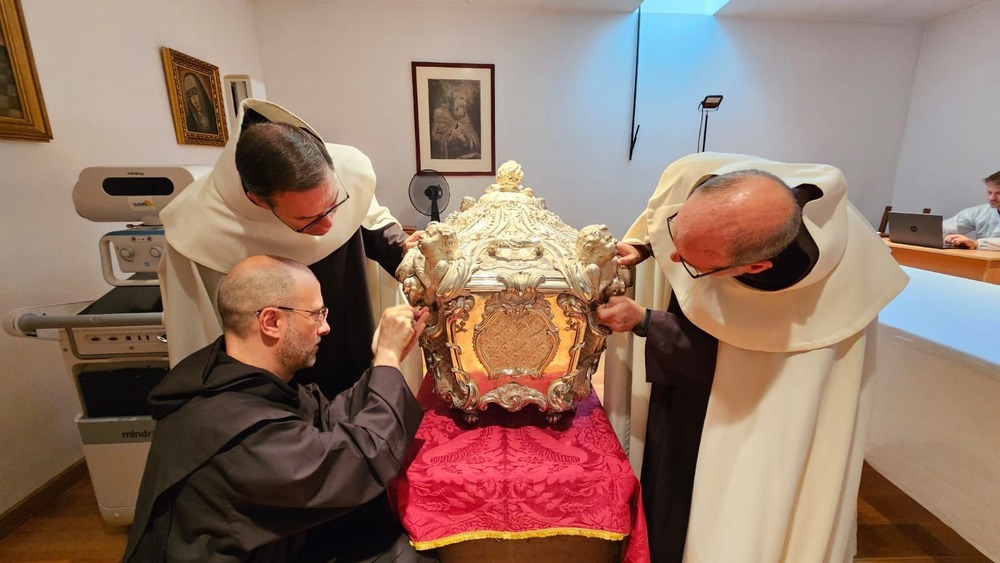
The silver coffin containing the body of St. Teresa of Avila in Alba de Tormes, Spain, is opened for the first time since 1914 and marked the beginning of a study of her relics, which will be carried out by Italian doctors and scientists with Vatican approval. (OSV News/courtesy Order of Carmel)
The silver coffin of St. Teresa of Ávila was opened in Alba de Tormes Aug. 28 only to confirm her body has remained incorrupt since her death in 1582. The opening of her tomb marks the beginning of a study of her relics, which will be carried out by Italian doctors and scientists — with the approval of the Vatican.
The last opening of St. Teresa's coffin happened in 1914, 110 years ago. The Spanish Diocese of Ávila now wants to obtain canonical recognition of the relics from Rome.
According to the announcement made by the postulator general of the Order of Discalced Carmelites, Father Marco Chiesa, those present at the scene were able to see that "it is in the same condition as when it was last opened in 1914." The then-general of the Carmelites, Clemente de los Santos, wanted to see the body of the foundress. Both openings — 110 years ago and now — confirmed that the body of St. Teresa has remained incorrupt since her death.
St. Teresa was a Spanish nun, one of the great mystics and religious women of the Catholic Church, and an author of spiritual classics. She started the Carmelite reform, which restored and emphasized the contemplative character of Carmelite life. St. Teresa was elevated to doctor of the church in 1970 by Pope Paul VI, the first woman to be honored with the title.
According to the Diocese of Ávila, the process of reaching the silver coffin containing the body of St. Teresa has been complicated. First, the marble slab in the tomb had to be removed. Then, the reliquaries were moved to the room set aside for the study of the relics. The community of Discalced Carmelites, together with the general postulator of the order, members of the ecclesiastical tribunal and a small group of religious participated in this transfer by singing the Te Deum.
The silver tomb was opened only in the presence of the scientific medical team and members of the ecclesiastical court.
Scholars, the diocese said, were struck by its "magnificent" state of preservation and robustness. The team also praised "excellent" workmanship of St. Teresa's tomb, which was donated to the community by King Ferdinand VI and his wife, Barbara of Braganza.
Advertisement
Two goldsmiths assisted the opening operation and 10 keys that protect the tomb were used: three that are kept in Alba de Tormes, three kept by the Duke of Alba, another three that the father general keeps in Rome, in addition to the key kept by the king of Spain. Three of these keys are to open the outer gate, three are to open the marble tomb, and the other four are to open the silver coffin.
A first look at her body revealed, Chiesa recounted, that "the last few years were difficult for her to walk, due to the pain that she herself described."
He added that in "analyzing her foot in Rome, we saw the presence of calcareous thorns that made walking almost impossible." "But she walked," having the ability to "move forward, despite her physical defects," explained the postulator.
It is still too early to obtain conclusive results, Chiesa said, but assured that with the new study it will be possible to "learn interesting facts about Teresa and also recommendations for the conservation of the relics."







